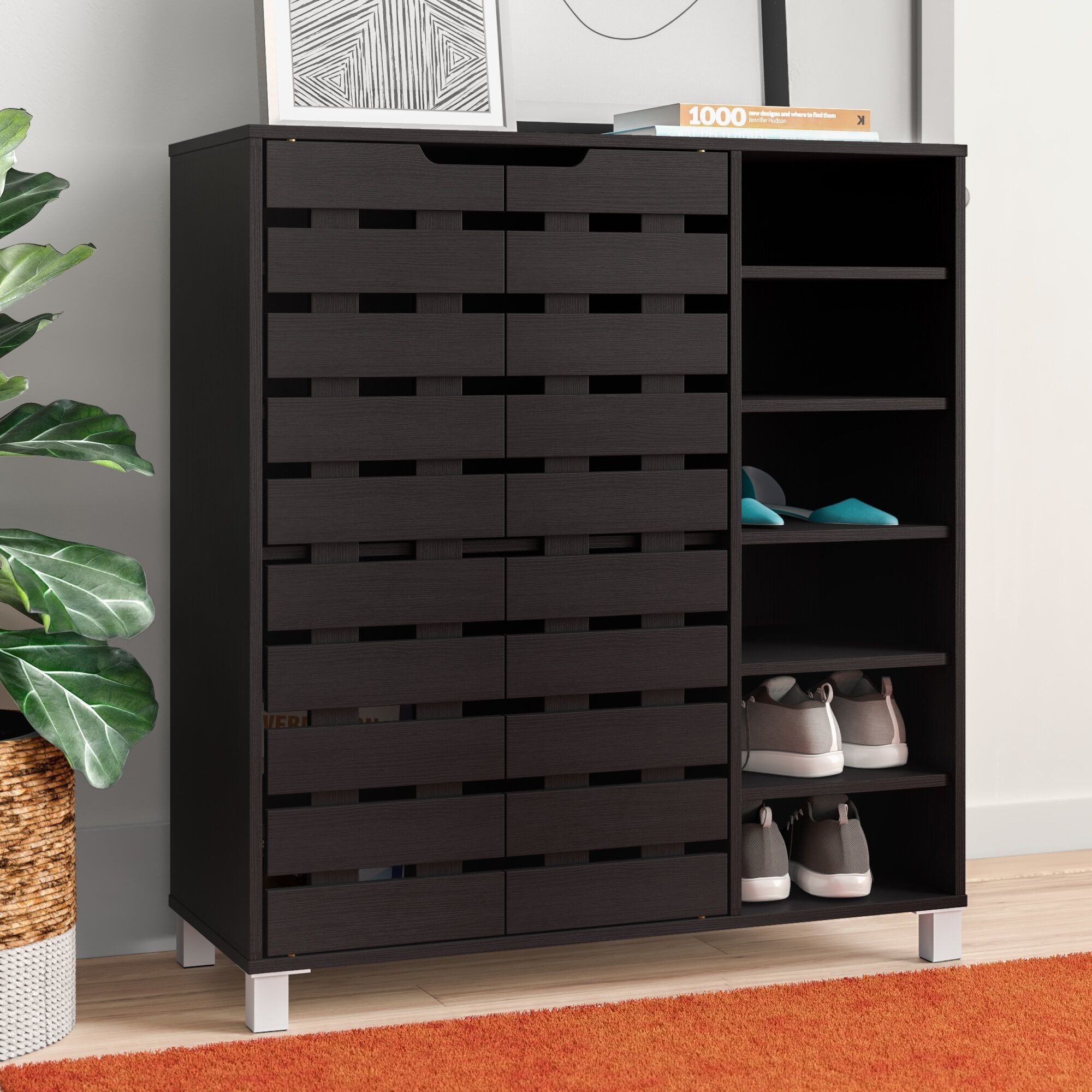Purchasing & Maintenance Guidance: 50 Pair Shoe Cabinet With Doors

Investing in a 50-pair shoe cabinet requires careful consideration of several factors to ensure a worthwhile purchase that meets your needs and lasts for years. This section details crucial aspects to consider before purchasing, provides a step-by-step assembly guide, and offers maintenance tips to prolong the cabinet’s lifespan.
Factors to Consider When Buying a 50-Pair Shoe Cabinet
The selection of a 50-pair shoe cabinet involves evaluating budget constraints, material properties, and aesthetic preferences. Budgetary limitations dictate the range of available options, from economical particleboard cabinets to more expensive solid wood models. Material choice influences durability, aesthetics, and maintenance requirements. Solid wood offers superior longevity but commands a higher price, while particleboard provides a budget-friendly alternative with varying degrees of durability depending on the quality. Style considerations involve choosing a design that complements existing décor and available space. Options range from sleek, modern designs to more traditional styles, impacting the overall visual appeal of the space. Careful consideration of these three factors – budget, material, and style – will ensure the chosen cabinet meets both practical and aesthetic needs.
Step-by-Step Assembly Guide for a 50-Pair Shoe Cabinet, 50 pair shoe cabinet with doors
Successful assembly requires adherence to a systematic approach and prioritization of safety. Always refer to the manufacturer’s provided instructions, as specific steps may vary. The following Artikels a general guide:
- Preparation: Clear a spacious, well-lit area. Gather all components, tools (screwdriver, wrench, etc.), and instructions. Ensure proper ventilation.
- Component Identification: Carefully examine all parts and identify each component according to the instruction manual. This prevents errors during assembly.
- Base Assembly: Begin by assembling the base of the cabinet, typically involving connecting the bottom panels and supporting structures. Follow the manufacturer’s instructions precisely.
- Side Panel Attachment: Securely attach the side panels to the assembled base, ensuring alignment and stability. Use the appropriate fasteners and tools.
- Shelf Installation: Install shelves according to the manufacturer’s guidelines. Ensure shelves are evenly spaced and securely fastened.
- Door Installation: Attach the doors to the cabinet frame, ensuring proper alignment and functionality of hinges and latches. Adjust hinges as needed for smooth operation.
- Final Checks: Once assembled, inspect the cabinet for any loose parts, misalignments, or potential hazards. Tighten any loose screws or fasteners.
- Clean-up: Dispose of any packaging materials responsibly and clean the assembled cabinet.
Safety Precautions: Always wear appropriate safety glasses and gloves during assembly. Use caution when handling sharp tools and heavy components. If unsure about any step, consult the manufacturer’s instructions or seek assistance.
Maintenance Tips for a 50-Pair Shoe Cabinet
Regular maintenance is crucial to preserve the cabinet’s appearance and structural integrity. This includes:
- Regular Cleaning: Dust the cabinet regularly using a soft cloth or duster. For tougher stains, use a mild detergent and water solution, ensuring thorough drying afterward.
- Preventative Measures: Avoid placing heavy objects on top of the cabinet, as this can cause damage. Keep the cabinet away from direct sunlight and moisture.
- Hardware Maintenance: Periodically inspect and tighten any loose screws, hinges, or latches. Lubricate hinges with a suitable lubricant to ensure smooth operation.
- Stain Removal: Address spills immediately to prevent staining. Use appropriate stain removers according to the cabinet’s material. For solid wood, specialized wood cleaners are recommended.
- Periodic Inspection: Conduct regular inspections to identify and address any potential issues, such as warping, damage, or loose components.
